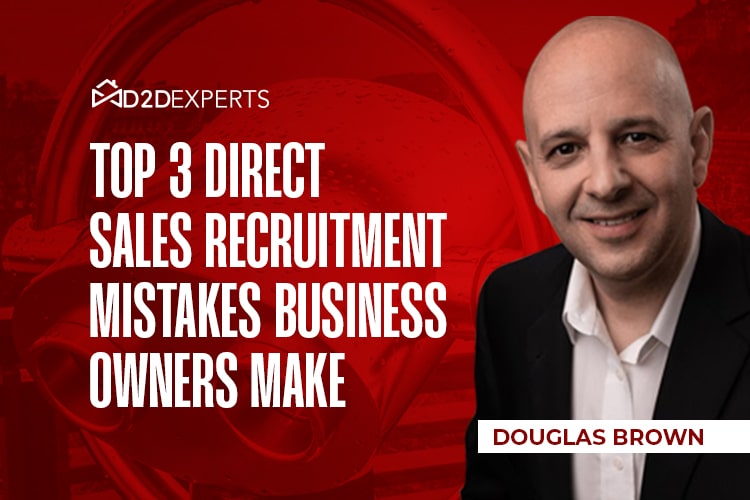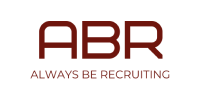Hey everyone, Sam Taggart here.
Your team is one of the most important components of your sales success. But Sales Recruitment isn’t just about finding bodies to fill roles; it’s about discovering standout players who can drive your business forward while steering clear of sales recruitment mistakes.
Table Of Content
In my years of pounding the pavement and coaching teams to sell with integrity and grit, I’ve seen the good, the bad, and the ugly of recruiting in this high-energy world. Today, we’re zeroing in on the pitfalls that trap many well-intentioned business owners and how to sidestep these common mistakes to build a sales force that performs and excels.

Doug C. Brown, a heavyweight in the business coaching arena, joins us in this conversation to unpack the secrets to successful recruitment in direct sales, touching on everything from the initial candidate screening to mastering the art of handling rejection, which, as you know, is all part of the game in sales. Doug has grown 35 companies, thanks to a direct sales career he started at age three. He also authored Win-Win Selling, an international bestseller and one of the top sales books D2D sales reps can learn from.
His insights into sales dynamics and how to optimize business processes have revolutionized the way companies approach sales. He’s here to share his expertise on fine-tuning your recruitment strategy, ensuring you attract not just candidates but the right candidates.
Let’s get into it and transform how you recruit, ensuring your team is powerful, effective, and ready to conquer the challenges of door-to-door sales.
Understanding Direct Sales
Definition of Direct Sales and Its Distinction from Other Sales Models Direct sales refer to a model where products or services are marketed directly to consumers, bypassing traditional retail channels. This approach is personal, typically involving face-to-face interactions, unlike indirect sales that might utilize third-party entities.
The Role of a Direct Sales Job A direct sales job is critical within a company’s structure because it directly influences market penetration and revenue growth. Direct sales professionals are the frontline warriors who bring a company’s products or services to the market, advocate for the brand, and directly influence consumer perceptions and buying decisions.
If you’re fired up about transforming your recruitment process and truly understanding what it takes to pick the right team members, then our Recruiting Bootcamp is your next step. Join me and other top-notch professionals at our intensive bootcamp designed for business owners like you who are ready to elevate their game.
Our Recruiting Bootcamp isn’t just another training session; it’s an experience where you will learn to master the art of identifying and securing top talent. From refining your candidate screening process to effectively handling rejection—every aspect is covered. Plus, you’ll get hands-on practice with real-life scenarios, ensuring you leave with the skills you need to turn recruitment challenges into opportunities.
Why Wait? Secure Your Spot Now!
Common Sales Recruiting Mistakes
Mistake #1: Not Defining the Ideal Candidate
One fundamental error in recruiting is the failure to define the ideal candidate clearly. This includes understanding the necessary skills, attitudes, and experiences required for the role. Without a clear candidate profile, the recruitment process can become a hit-and-miss operation, leading to the employment of individuals who may not align with the company’s needs or culture.
Mistake #2: Poorly Structured Interview Process
A weak interview process can significantly impair a company’s ability to hire well-suited candidates. To avoid this, companies should structure their interviews to include behavioral and situational questions that reveal deeper insights into candidates’ capabilities and fit. An effective interview process is critical in gauging candidate suitability beyond the resume.
Mistake #3: Neglecting the Candidate’s Experience
The recruitment experience greatly impacts a candidate’s perception of the company. A negative experience can deter talent and damage the company’s reputation. Enhancing candidate experience involves maintaining communication, being transparent about the process, and making the interview process as engaging and respectful as possible.
If you’re fired up about transforming your recruitment process and truly understanding what it takes to pick the right team members, our Recruiting Bootcamp is your next step. Join me and other top-notch professionals at our intensive bootcamp designed for business owners like you who are ready to elevate their game.
The D2D Recruiting Boot Camp isn’t just another training session; it’s where door-to-door pros unlock the secrets to the most effective sales recruiting strategies to find and secure top talent.
The Impact of Rejection in Sales Recruiting
Handling Rejection in Sales
Rejection is an inherent part of the sales profession and can significantly impact sales personnel’s morale and performance. Developing strategies for handling, dealing with, and managing rejection is crucial. These strategies include training sales teams to view rejection as a normal part of the sales process and to use it as a learning opportunity to refine their sales tactics.
Overcoming the Fear of Rejection
The fear of rejection can deter sales professionals from performing at their best. To combat this, it is important to foster a supportive environment that encourages taking risks without fear of failure. Techniques include role-playing scenarios that desensitize sales personnel to rejection and training programs focusing on resilience and emotional intelligence.
Building a Positive Mindset in Sales Teams
Importance of a Positive Mindset
Maintaining a positive mindset is vital in the high-rejection world of direct sales. Leaders should cultivate an environment where setbacks are seen as stepping stones to success. This involves consistent motivation, recognition of efforts, and celebrating small wins alongside big achievements.
Methods to Deal with Rejection
Effective methods to handle rejection include:
- Regular training sessions that focus on emotional coping mechanisms.
- Encouraging a culture where feedback and constructive criticism are viewed positively.
- Coaching sessions that reinforce the company’s values and sales approaches.
Metrics in Sales Recruitment and Performance
During our discussion, Doug emphasized the importance of metrics in assessing and enhancing sales team performance. He mentions the significance of tracking everything from phone calls to meaningful communications and first appointments. Specifically, he highlighted a strategy of “20 door knocks, 20 secondary methods to get into the business, and 20 follow-ups,” which could be adapted based on the team’s goals and capacity. These metrics gauge productivity and pinpoint improvement areas, which can be crucial for training and development.
Enhancing Sales Efficiency
Linking Sales Processes with Effective Recruiting
Efficient sales processes are closely tied to effective recruiting practices. Businesses can significantly boost their sales efficiency by ensuring that the right candidates are recruited—those with the required skills and align with the company’s culture.
Boosting Business Growth Through Recruitment Choices
The right recruitment choices can improve sales team performance and overall business growth. This involves strategic planning in the recruitment process to ensure alignment with long-term business goals and the continuous improvement of recruitment processes.
The Importance of Fast and Effective Onboarding
Doug also brought up a vital point about the speed of onboarding recruits. He recounted how companies he’s worked with aim to send out an offer letter within 24 hours of an interview and initiate training the following week. This rapid integration into the company not only capitalizes on the enthusiasm of new hires but also reduces the downtime that can lead to a loss of potential sales.
Recruiting the right sales team is crucial for the success of any direct sales business.
By avoiding common pitfalls such as poorly defining the ideal candidate or neglecting the candidate experience, companies can enhance their recruitment strategies and, by extension, their overall business performance. Continual refinement of recruitment processes, coupled with a focus on overcoming and learning from rejection, will lead to sustained success and growth in the competitive world of direct sales.
I knocked doors since I was 11! Never bought into the whole hourly normal job, and used direct sales to be the vehicle to create MASSIVE success. I Started the Direct Sales division for Solcius as their VP building it up to have 70+ sales reps nation wide. In 2018 I left to pursue a greater mission to unify and uplevel the Door to Door industry and founded the D2D Experts.
























